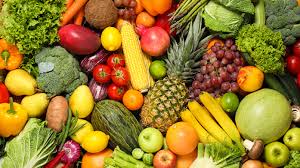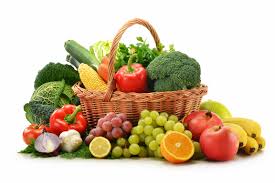Horticulture is the science and art of production, processing, and marketing of vegetables, fruits, nuts, and ornamental plants. All crops or plants that constitute horticultural crops are classified or grouped according to their uses, production, or the type of products they produce. This article addresses the classification of horticultural groups.
Read Also: Pumpkin Flowers (Pumpkin Blossoms): Complete Growing and Care Guide
Classification of Horticultural Crops in Agriculture

Horticultural crops have been classified into various groups depending on their growth habits, cultivation requirements, climatic needs, and uses. These crops are generally classified into three broad groups: fruits and nuts, vegetables, and flowers or ornamentals.
A. Classification Based On Use of Horticultural Plants
1. Vegetables
Vegetables grown for the aerial edible parts (above the soil) include:
i. Cole crops Vegetables with curled leaves, e.g. cabbage, cauliflower.
ii. Pulse crops Vegetables that produce pods, e.g. pea, bean, green bean.
iii. Solanaceous fruits Vegetables that produce fruits and tubers, e.g. tomato, pepper, garden egg, potato.
iv. Green or leafy vegetables Vegetables that produce edible leaves, e.g. amaranth, bitter leaf, water leaf, spinach.
v. Salad crops Vegetables that grow on vines, e.g. melon, cucumber, pumpkin.
vi. Corn vegetables e.g. popcorn, sweet corn.
Vegetables grown for their underground edible parts include:
i. Root crops e.g. carrot, Irish potato, cassava.
ii. Tuber crops e.g. yam, cocoyam.
iii. Bulb crops e.g. onion, garlic.
2. Fruits
1. Temperate fruits Grown in cooler regions:
i. Tree fruits: apple, peach
ii. Small fruits: grapevine, strawberry
iii. Nut fruits: peach, walnut
2. Tropical and subtropical fruits Grown in hot regions:
i. Tree fruits: citrus, mango, guava, cashew
ii. Herbaceous perennial fruits: banana, plantain, pineapple
iii. Nut fruits: cashew nut, date nut, areca nut
3. Flowers and Ornamentals
i. Flowers: e.g. rose, marigold, sunflower
ii. Lawns: e.g. carpet grass, Bahama grass
iii. Hedges: e.g. gambogi, croton yellow
iv. Trees: e.g. Christmas tree, umbrella tree, neem tree
Other classifications are based on specific characteristics as outlined below.
B. Classification Based On Growth Habit of Crops
This classification is based on the natural growth pattern of crops and includes:
1. Herbs e.g. ageratum
2. Shrubs e.g. hibiscus
3. Trees e.g. mango, citrus
4. Climbers e.g. bougainvillea
5. Creepers e.g. bignonia, gracilis
C. Classification Based On Life Cycle of Crops
1. Annual or seasonal crops: Complete their life cycle within a year, e.g. marigold, amaranth, tomato, Irish potato.
2. Biennial crops: Require two years or at least two growing seasons to complete their life cycle, e.g. cassava, yam.
3. Perennial crops: Live for more than two years, up to 35 years, e.g. mango, citrus, grapevine, guava.
D. Classification Based On Climatic Requirement
This grouping considers the temperature needs of crops:
1. Temperate crops: Found in cold regions, e.g. apple, almond.
2. Tropical crops: Tolerate warm temperatures but not severe cold, e.g. banana, papaya, pineapple.
3. Subtropical crops: Need warmth and humidity and tolerate mild winters, e.g. fig, mango, cashew nut.
Importance Of Vegetables and Fruits in Nigeria’s Economy

Vegetables and fruits play significant roles in the Nigerian economy. Just like field crops and livestock, their relevance extends to individuals, communities, and the country at large in the following ways:
1. Provision of Food: Vegetables and fruits provide essential nutrients such as carbohydrates, vitamins, minerals, and water. Plant-based foods are generally considered healthy and natural for both humans and animals.
2. Provision of Income: Horticultural crops often yield higher returns per unit area compared to field crops. This leads to increased income for farmers and contributes to poverty reduction.
3. Source of Raw Materials: They supply raw materials for industries like fruit juice production, pharmaceuticals, and oil mills, thereby reducing importation and lowering production costs.
4. Provision of Employment: People engaged in the production, processing, and marketing of fruits and vegetables are either self-employed or employed in related industries, which helps reduce unemployment.
5. Utilization of Waste and Undulating Lands: Fruits and vegetables can be cultivated on sloped or undulating lands. Crops such as mango, cashew, and various vegetables can thrive on hilly terrain.
6. Source of Foreign Exchange: Exporting vegetables and fruits brings in foreign exchange, strengthening the national economy.
Read Also: Amazon Flowers: All You Need To Know About
Importance of Vegetables in Human Diet

1. Nutrient Supply: Vegetables provide nutrients often missing in other food sources, such as calcium and iron.
2. Acid Neutralization: Some vegetables, e.g. okra and Corchorus species, help neutralize excess acid from fruits.
3. Prevention of Constipation: Fibre from vegetables like okra, cucumber, amaranth, lettuce, and cabbage promotes digestion.
4. Rich in Vitamins:
i. Vitamin A: carrots, sweet corn, amaranth, celosia
ii. Vitamin B: bitter leaf, water leaf, Solanum, celosia
iii. Vitamin C: tomatoes, carrots, lettuce, cabbage, amaranth
5. Source of Carbohydrates: Potatoes, sweet corn, and carrots provide energy.
6. Protein Supply: Green beans and peas are affordable protein sources. Vegetables like bitter leaf, amaranth, and Telfairia also contribute protein to the diet.
7. Contribution to Balanced Diet: Vegetables help overcome nutritional deficiencies and support balanced meal planning.
8. Enhance Palatability of Staple Foods: They improve the taste and acceptance of local staple dishes.
Horticultural crops are as essential as other field crops. Their production should be encouraged across all levels to help reduce poverty and provide employment opportunities for the unemployed.
Do you have any questions, suggestions, or contributions? If so, please feel free to use the comment box below to share your thoughts. We also encourage you to kindly share this information with others who might benefit from it. Since we can’t reach everyone at once, we truly appreciate your help in spreading the word. Thank you so much for your support and for sharing!

